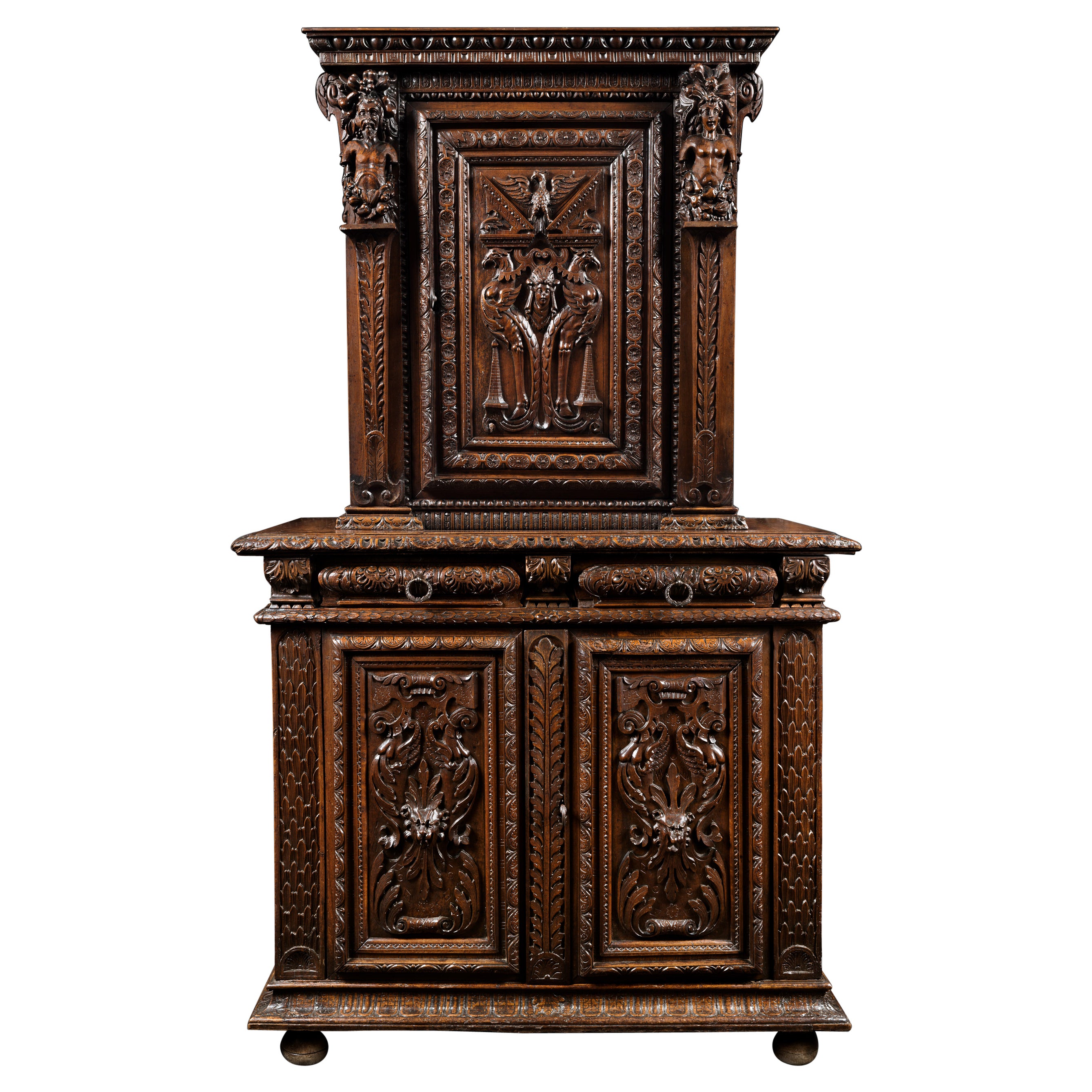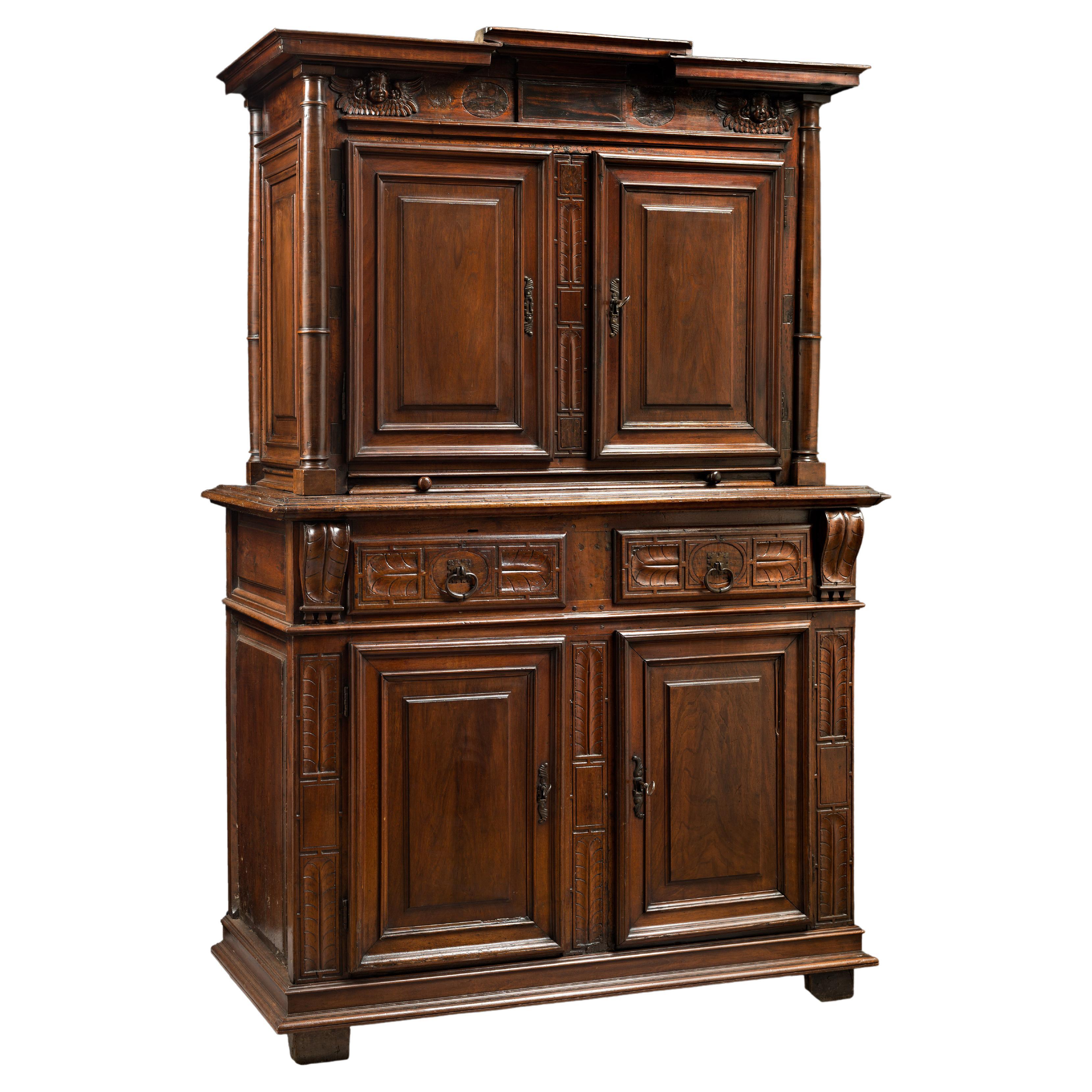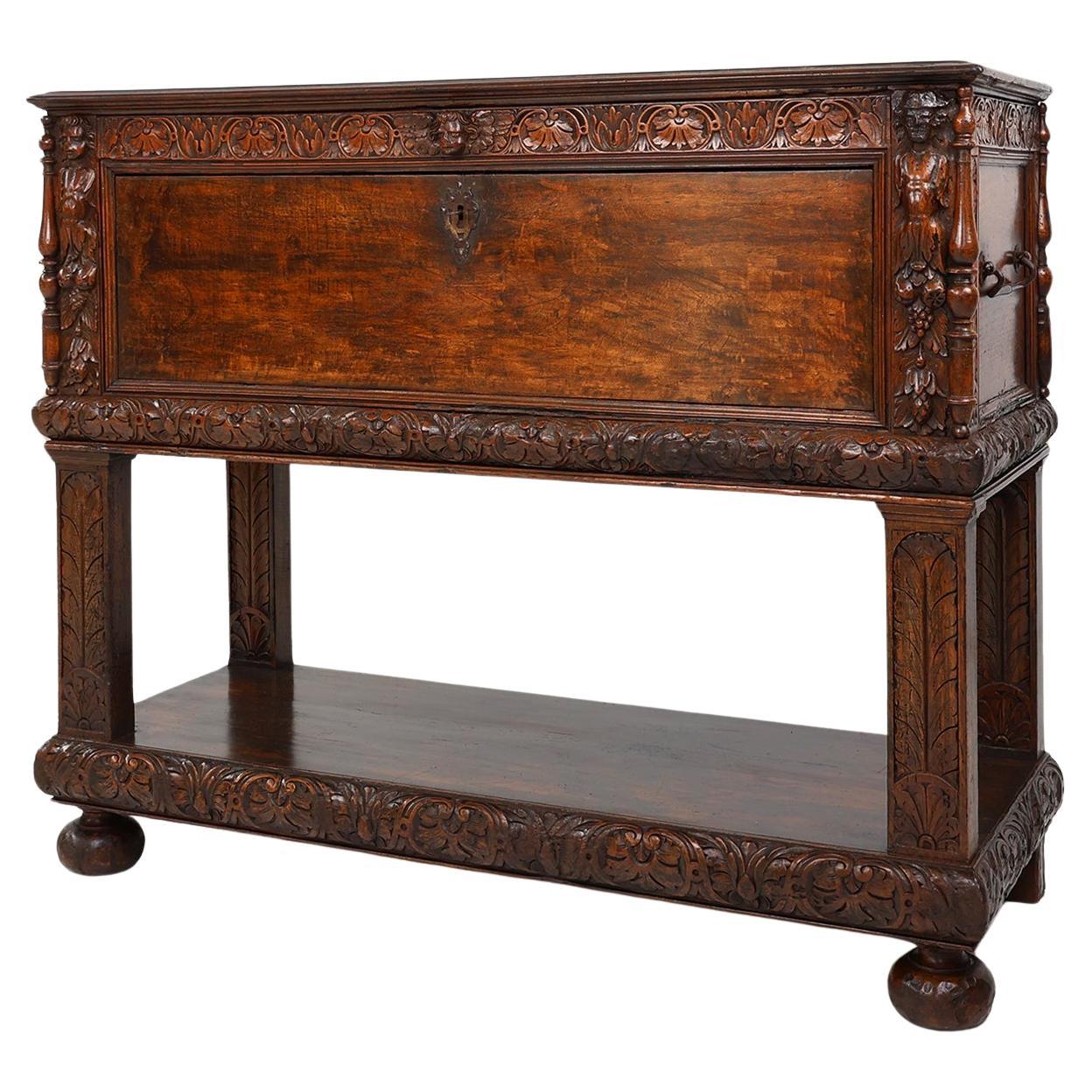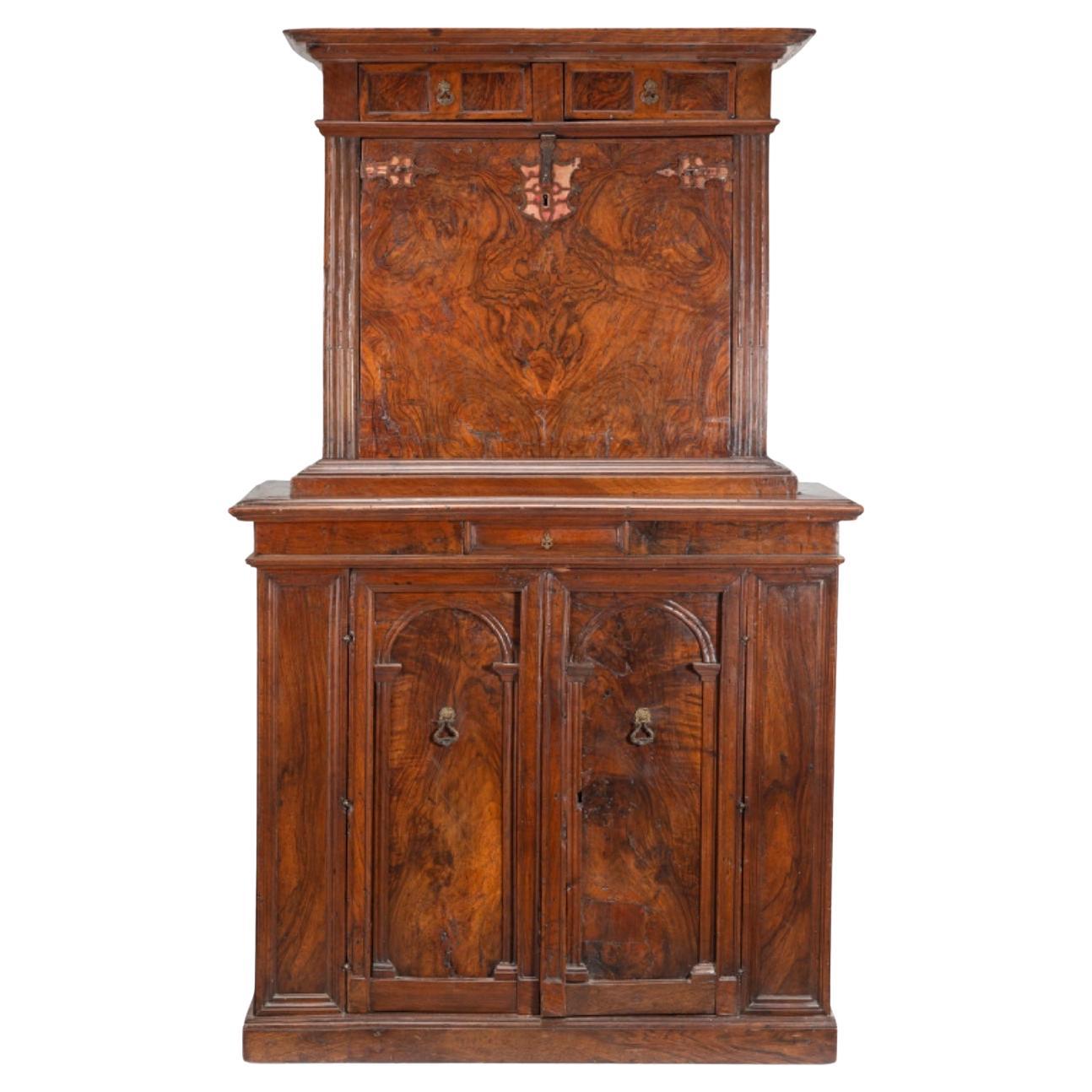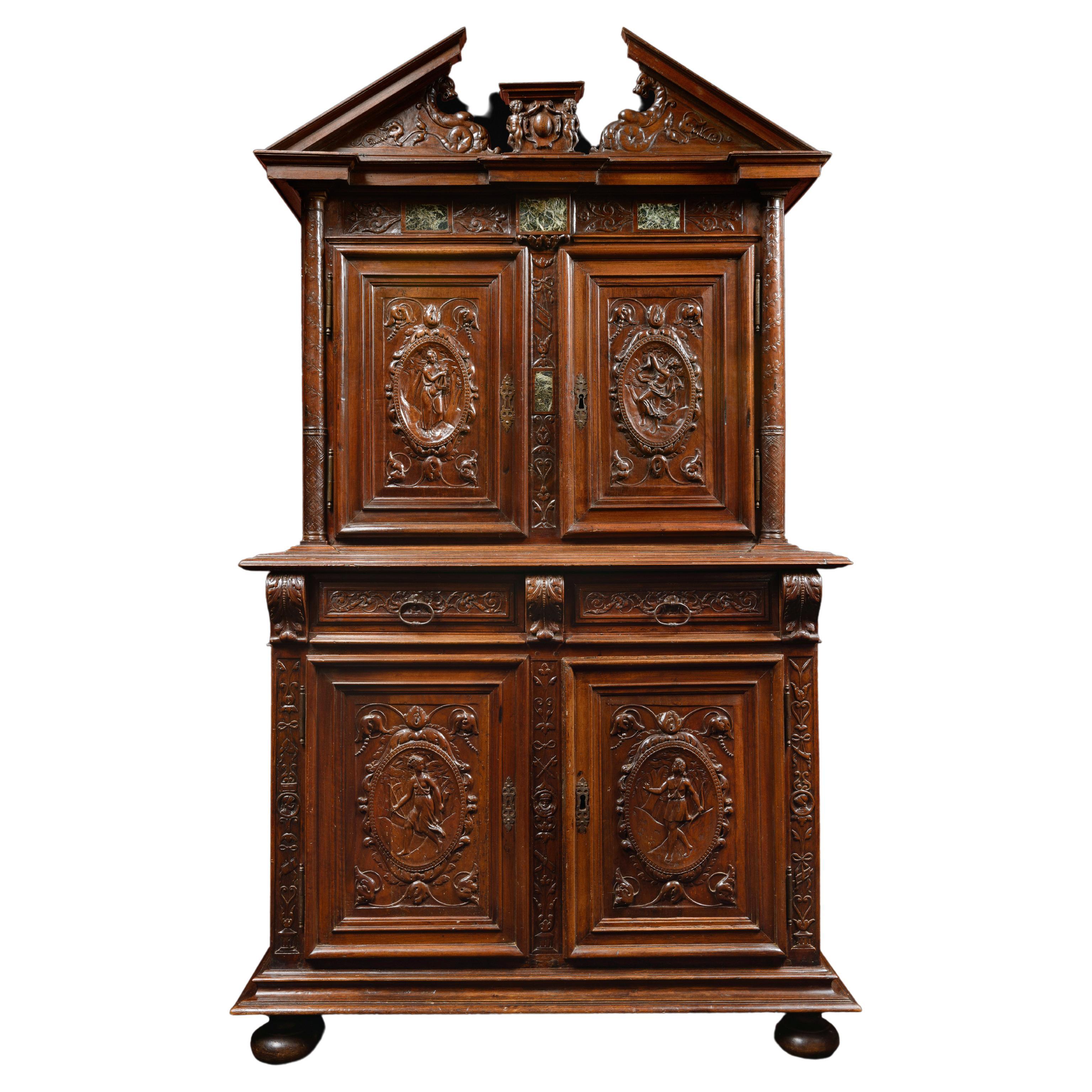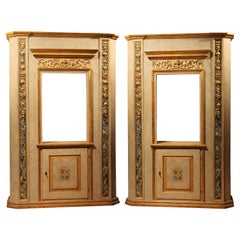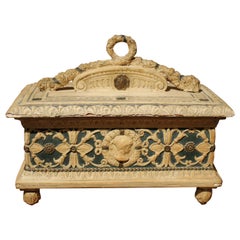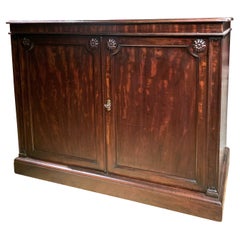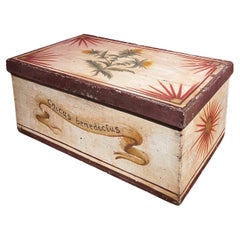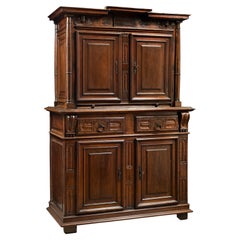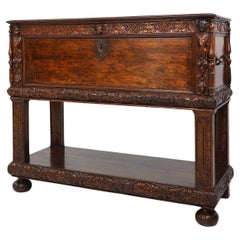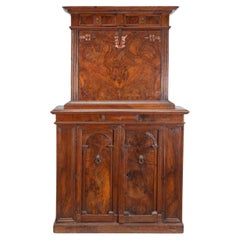Artículos similares a 16th Century Italian Renaissance Painted Marble Lacquer Wooden Cabinet (1500s)
Cargando vídeo
¿Quieres más imágenes o vídeos?
Solicita imágenes o vídeos adicionales al vendedor
1 de 22
16th Century Italian Renaissance Painted Marble Lacquer Wooden Cabinet (1500s)
Acerca del artículo
An extraordinary Italian Renaissance wooden cabinet from the 1500s awaits the discerning collector. This antique lacquered furniture piece, dating back to the 16th century, showcases a sophisticated design and a breathtaking lacquer finish painted to obtain a marble effect that exemplifies the pinnacle of Renaissance craftsmanship.
This rare armoire or cabinet embodies the artistic mastery of 16th-century Italian artisans. The exquisite marbleized finish, meticulously applied using advanced lacquering techniques of the era, transforms this wooden storage chest into a true work of art. The skilled manipulation of pigments creates an illusion of veined marble, a testament to the Renaissance fascination with classical materials and trompe l'oeil effects.
The cabinet's exterior is a masterpiece of decorative artistry. Yellow ochre lacquer alternates with marbleized sections, creating a visually striking effect. On the doors and sides, the marbleized areas are elegantly framed by a darker green/blackish lacquered band, adding depth and sophistication to the overall design. This interplay of colors and textures immediately draws the eye and speaks to the refined tastes of its original noble owners.
Originating from a noble family's collection in Northern Italy, this ornate cupboard or wardrobe has been cherished and preserved through the centuries within the same lineage. Its provenance speaks to the refined tastes of Renaissance aristocracy and adds a layer of historical significance to its already impressive artistic value.
Its exceptional state of conservation speaks volumes about its cherished status and careful stewardship through the ages.
The cabinet's structure, crafted from fine Italian wood, demonstrates the superior cabinetmaking skills of the 1500s, whispering tales of 16th-century craftsmanship.
From the hand-carved wood elements to the original iron nails, each component is a testament to the artisanal skills of the Renaissance period.
Every joint, carving, and decorative element reflects the meticulous attention to detail characteristic of high Renaissance furniture making. The painted marble effect, applied with remarkable precision, covers the exterior, it’s applied with remarkable precision by master lacquer artists, creating a striking visual impact that would have been the pride of any 16th-century palazzo.
The interior, lined with exquisite damask fabric, further underscores its luxury and refinement.
Distinctive Features:
- A precious and visually striking "reverse castle" lock mechanism
- An elegant top molding with a generous scoop detail
- Hand-forged iron joints shaped like lance heads
- Feet adorned with decorative curls, elevating the design beyond mere functionality
- Unique door design: the main door opens fully, while a fixed panel remains in place, adding structural integrity and visual interest
- Wonderful Original Patina
Interior Design and Functionality:
The cabinet's interior reveals three conveniently placed shelves, efficiently designed for storage or display. These shelves can be repositioned or removed, offering versatility to suit various needs. The left door closes with an original, discreetly placed hook under the shelf, ensuring easy access and operation while maintaining a clean aesthetic. The doors close by turning the knob horizontally, securing the panel in place.
Construction and Versatility:
The cabinet's construction is truly remarkable. Appreciate the hand-gouged wooden parts and the authentic aged appearance of the wood on the back and underside, complete with marks of manual construction (including dovetail joints and mortise and tenon connections). Designed for practicality, it can be easily disassembled into four pieces, facilitating transportation and reassembly.
Multipurpose Elegance:
With its refined elegance and manageable dimensions, this cabinet adapts effortlessly to various rooms and functions:
Linen storage for sheets, tablecloths, and blankets
A distinctive armoire or wardrobe
A showcase cupboard for porcelain collections or precious objects
An exceptional bookcase, Its adaptable interior, originally designed for storing precious items and clothing, easily accommodates a collection of valuable tomes or manuscripts, making it an ideal addition to a refined study or library.
Styling Suggestion:
Consider leaving one door ajar to reveal the immaculate craftsmanship of the interior. The natural, unlacquered wood inside not only demonstrates the cabinet's quality but also speaks to its significance - a hallmark of premium furniture from this era.
This late 16th-century Italian cabinet is more than a storage solution; it's a statement piece that embodies Renaissance artistry and aristocratic heritage. Its sophisticated lacquer work and intricate design make it a true collector's item, perfect for those seeking to own a piece of Italian Renaissance craftsmanship at its finest.
Dimensions: W. 173 cm, D. 65 cm, H. 250 cm
The owners have had a custom-made wooden walnut base constructed as a plinth to elevate the cabinet, allowing the original lacquer finish to be preserved during cleaning and maintenance. This base will be included with the sale, and the new owner can choose whether to utilize it. The top section of the cabinet is 20 cm wider than the base, creating an elegant, protruding silhouette.
- Dimensiones:Altura: 250 cm (98,43 in)Anchura: 173 cm (68,12 in)Profundidad: 65 cm (25,6 in)
- Estilo:Renacimiento (Del período)
- Materiales y técnicas:
- Lugar de origen:
- Época:
- Fecha de fabricación:1500s
- Estado:Desgaste acorde con la edad y el uso.
- Ubicación del vendedor:Firenze, IT
- Número de referencia:Vendedor: Galleria Antonio Esposito di Chiara Esposito, Florence, Italy 1stDibs: LU950345469312
Sobre el vendedor
5,0
Vendedor profesional aprobado
Todos los vendedores superan estrictas normas de autenticidad y confiabilidad
Establecido en 1950
Vendedor de 1stDibs desde 2012
114 ventas en 1stDibs
Tiempo de respuesta usual: 3 horas
- EnvíoRecuperando presupuesto…Envío desde: Firenze, Italia
- Política de devolución
Partes de esta página se han traducido automáticamente. 1stDibs no puede garantizar la exactitud de las traducciones. El inglés es el idioma predeterminado de este sitio web.
Garantía de autenticidad
En el improbable caso de que haya algún problema con la autenticidad de un artículo, ponte en contacto con nosotros en un plazo de 1 año para recibir un reembolso total. DetallesGarantía de devolución de dinero
Si tu artículo no es como se describe, sufre daños durante el transporte o no llega, ponte en contacto con nosotros en un plazo de 7 días para recibir un reembolso total. DetallesCancelación dentro de las 24 horas
Tienes un período de gracia de 24 horas para reconsiderar tu compra, sin preguntas.Vendedores profesionales aprobados
Nuestros vendedores de primera clase deben cumplir estrictos estándares de servicio para mantener la integridad de nuestros anuncios.Garantía de igualación de precios
Si encuentras que un vendedor publicó el mismo artículo por un precio menor en otro lado, igualaremos ese precio.Entrega global de confianza
Nuestra red de transporte de primera ofrece opciones de envío especializado en todo el mundo, que incluye envío personalizado.Más de este vendedor
Ver todoArmarios neoclásicos italianos con estantes abiertos de imitación de mármol lacado y madera de giltwood
Añade estanterías y espacio de almacenamiento adicional a tu salón, biblioteca o estudio con estos importantes armarios o librerías abiertos antiguos de estilo neoclásico tallados a ...
Categoría
Antiguo, siglo XIX, Italiano, Neoclásico, Estanterías
Materiales
Madera dorada, Madera, Laca
Caja italiana con tapa de madera lacada y gesso pintado del siglo XIX de estilo renacentista
Esta hermosa caja florentina con tapa rectangular del siglo XIX está totalmente decorada en redondo con todos los motivos típicos del Renacimiento italiano. La estructura de madera l...
Categoría
Antiguo, siglo XIX, Italiano, Renacimiento, Joyeros
Materiales
Gesso, Yeso, Madera
Siglo XIX Gabinete de caoba imperio italiano de dos puertas
Llamativa cómoda italiana de caoba del siglo XIX, del periodo Imperio, hacia 1815-1820. La forma recta y atemporal combinada con una chapa de caoba única hacen de esta cómoda trumeau...
Categoría
Antiguo, siglo XIX, Italiano, Imperio, Gabinetes
Materiales
Metal, Hierro
Antigua Caja de Boticario Italiana de Madera Lacada de Estilo Renacentista
Este precioso botiquín antiguo lacado se fabricó en Italia a finales del siglo XIX al estilo de los cofres para hierbas medicinales que se utilizaban en las farmacias durante la Edad...
Categoría
Antiguo, siglo XIX, Italiano, Renacimiento, Cajas decorativas
Materiales
Madera
Grupo escultórico de porcelana esmaltada blanca del Renacimiento italiano del siglo XIX
Por Carlo Ginori, Capodimonte, Giambologna
Esta atractiva escultura italiana de porcelana blanca esmaltada del siglo XIX representa "El rapto de las Sabinas", según una obra monumental del artista renacentista Giambologna (15...
Categoría
Antiguo, siglo XIX, Italiano, Renacimiento, Esculturas figurativas
Materiales
Porcelana
Pedestales o columnas arquitectónicas italianas del siglo XIX de imitación de mármol lacado
Este antiguo par de magníficos pedestales o columnas arquitectónicos italianos de madera tallada de finales del siglo XIX tiene forma rectangular y un maravilloso acabado lacado en i...
Categoría
Antiguo, Fines del siglo XIX, Italiano, Neoclásico, Pedestales y columnas
Materiales
Madera, Laca
También te puede gustar
Armario Renacentista Francés Tallado del Siglo XVI
Raro armario renacentista tallado
Periodo : 2ª mitad del siglo XVI, hacia 1570
Origen : Francia, Borgoña o Languedoc
Este mueble encarna la producción del segundo Renacimiento...
Categoría
Antiguo, siglo XVI, Francés, Renacimiento, Gabinetes
Materiales
Nogal
Armario renacentista de dos cuerpos del siglo XVI
Antigua colección Altounian
A principios del reinado de Enrique II (1547-1559) evoluciona la ornamentación del mobiliario. Los pocos motivos medievales que aún se utilizaban acaba...
Categoría
Antiguo, siglo XVI, Francés, Renacimiento, Gabinetes
Materiales
Nogal
Armario renacentista italiano del siglo XVI en nogal con ricas tallas
Italia / Siglo XVI / Armario / nogal / Renacimiento / Antiguo
Raro mueble renacentista italiano del siglo XVI en nogal con decoraciones talladas a mano de 3 cabezas y marcos de moti...
Categoría
Antiguo, siglo XVI, Italiano, Renacimiento, Gabinetes
Materiales
Nogal
Importante Escritorio Florentino Renacentista del Siglo XVI con Frente Caído
Escribanía italiana renacentista florentina tallada en nogal, circa 1560, siglo XVI
Del Museo del Palacio Davanzatti de Florencia
Altura: 59 pulgadas x 36 pulgadas de ancho x 17-1/2 ...
Categoría
Antiguo, siglo XVI, Italiano, Renacimiento, Gabinetes
Materiales
Hierro
Armario francés Deux-Corps de nogal renacentista de finales del siglo XVI
Precioso armario renacentista francés en dos partes. La parte superior, con dos puertas talladas con figuras clásicas, se abre a un interior provisto de tres pequeños cajones en la p...
Categoría
Antiguo, siglo XVI, Francés, Renacimiento, Gabinetes
Materiales
Nogal
Armario francés de nogal del siglo XVI con incrustaciones de mármol
En el poste izquierdo del cuerpo inferior, está escrita la fecha de 1596 en una cartela
Este armario tiene dos cuerpos. La parte superior, retranqueada, está moldeada y tallada. E...
Categoría
Antiguo, siglo XVI, Francés, Renacimiento, Gabinetes
Materiales
Nogal
